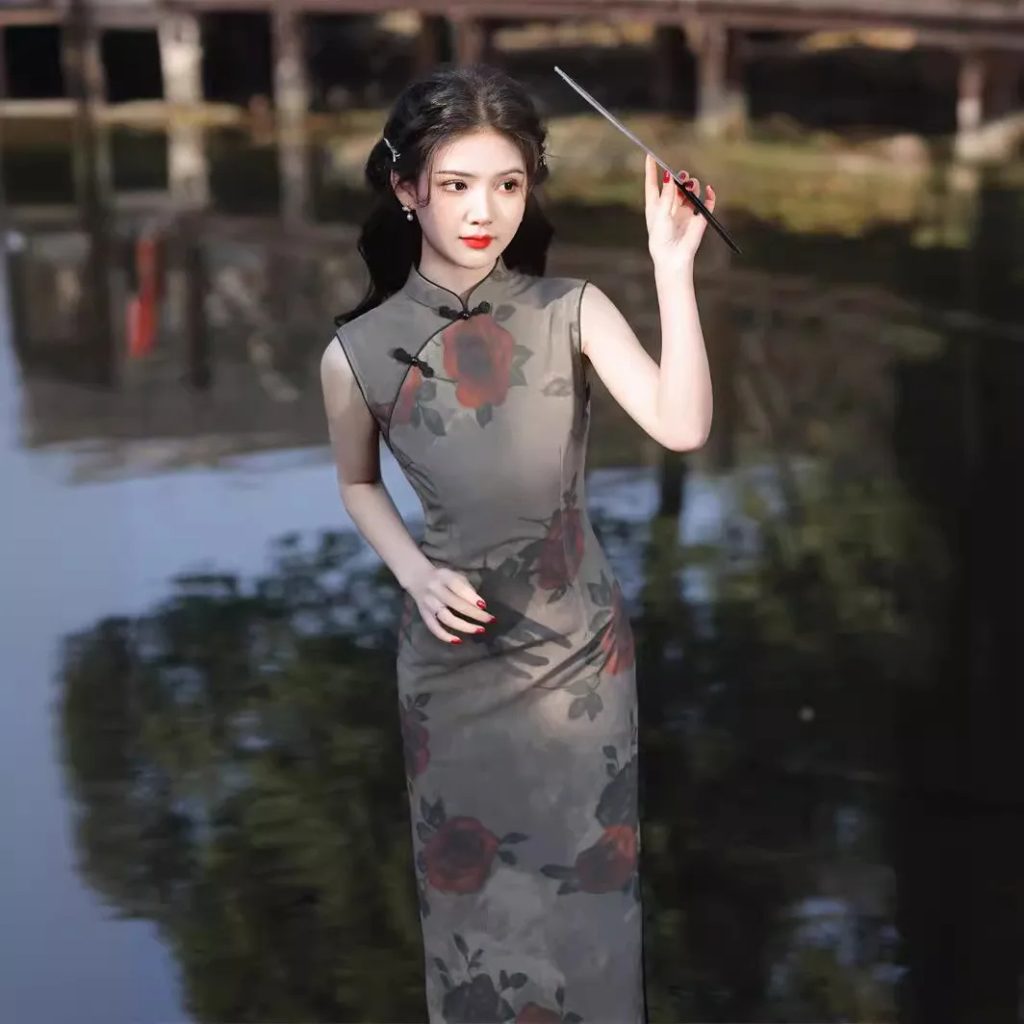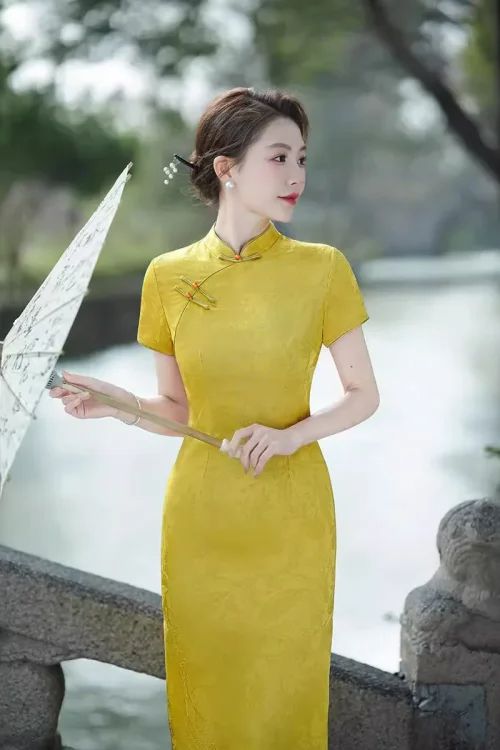The Qipao’s Enduring Appeal: Exploring the Timeless Charm of a Cultural Icon
The qipao, an iconic Chinese dress, has captivated hearts for centuries with its timeless elegance and cultural significance. Originating in the 1920s, the qipao has evolved over time, yet its essence remains unchanged.

Alluring Silhouette
The qipao’s silhouette is both alluring and modest. Its high neckline, fitted bodice, and flowing skirt accentuate the female form while maintaining a sense of propriety. The dress is typically made from luxurious fabrics such as silk, satin, or brocade, adorned with intricate embroidery or beading.
Importancia cultural
Beyond its aesthetic appeal, the qipao holds deep cultural significance. It represents the fusion of traditional Chinese aesthetics with Western influences. The high neckline and long sleeves reflect Confucian values of modesty, while the fitted bodice and flowing skirt embody the liberation and modernity of the early 20th century.
Historical Popularity
The qipao has been worn by countless women throughout history, from empresses to actresses. It has graced the covers of magazines and been featured in numerous films. In the 1950s, it became a symbol of Chinese glamour and sophistication, popularized by actresses such as Grace Kelly and Audrey Hepburn.
Actualidad
Today, the qipao continues to be a beloved fashion icon. It is worn for special occasions, such as weddings, festivals, and formal events. Designers have reinterpreted the qipao in countless ways, incorporating modern elements while preserving its timeless charm.
Conclusión
The qipao’s enduring appeal lies in its ability to transcend time and trends. It is a prenda that embodies both tradition and modernity, elegance and modesty. Whether worn by a woman of the past or present, the qipao remains a symbol of Chinese culture and a testament to the enduring power of fashion.
From Tradition to Trend: The Evolution of the Qipao in Modern Fashion
The qipao, an iconic garment steeped in Chinese tradition, has transcended time to become a timeless fashion statement. Its origins can be traced back to the Manchu dynasty, where it was worn as a formal dress by women. Over the centuries, the qipao has undergone subtle transformations, adapting to the evolving tastes and sensibilities of each era.

Rise to Popularity
In the early 20th century, the qipao gained widespread popularity as a symbol of Chinese identity and modernity. It was embraced by women from all walks of life, from socialites to revolutionaries. The qipao’s sleek silhouette and intricate details exuded sophistication and elegance, making it a favorite among fashion-forward women.
Golden Age
During the 1930s and 1940s, the qipao reached its golden age. Shanghai, the cosmopolitan hub of China, became a breeding ground for fashion innovation, and the qipao became a staple of the city’s glamorous nightlife. Designers experimented with new fabrics, colors, and embellishments, creating qipaos that were both stylish and alluring.
Post-War Era and Resurgence
In the post-war era, the qipao’s popularity waned somewhat as Western fashion influences gained prominence. However, it remained a cherished garment for special occasions and formal events. In the 1990s, there was a resurgence of interest in the qipao, as designers began to reinterpret the traditional garment for a contemporary audience.
Global Fashion Icon
Today, the qipao continues to be a beloved fashion icon. It has been embraced by designers around the world, who have incorporated its classic elements into modern designs. From haute couture to ready-to-wear, the qipao has found its place in the wardrobes of women seeking a touch of timeless elegance.
Conclusión
The qipao’s enduring appeal lies in its versatility. It can be dressed up or down, making it suitable for a wide range of occasions. Its simple yet sophisticated design allows for endless variations in terms of fabric, color, and embellishment. Whether adorned with intricate embroidery or kept minimalist, the qipao exudes an air of timeless grace.
The Qipao as a Symbol of Cultural Identity: Its Significance in Chinese History and Beyond
The qipao, an iconic Chinese garment, has transcended time and fashion trends, embodying the timeless elegance of Chinese culture. Its origins can be traced back to the Manchu dynasty, where it was worn as formal attire by women. Over the centuries, the qipao has evolved, adapting to changing societal norms while retaining its core elements.

Distinctive Silhouette
The qipao’s distinctive silhouette is characterized by its high neckline, fitted bodice, and long, flowing skirt that often features slits on the sides. Traditionally made from silk or satin, the qipao is adorned with intricate embroidery, beading, or other embellishments that showcase the wearer’s wealth and status.
Importancia cultural
Beyond its aesthetic appeal, the qipao holds significant cultural importance. It has been worn by generations of Chinese women, from empresses to ordinary citizens, and has become a symbol of Chinese identity. During the Republican era, the qipao gained popularity as a symbol of modernization and women’s liberation. It was embraced by women who sought to break free from traditional gender roles and embrace a more cosmopolitan lifestyle.
Global Fashion Influence
In the 1950s and 1960s, the qipao became a global fashion icon, thanks in part to the influence of Chinese actresses such as Grace Chang and Anna May Wong. Western designers were captivated by its exotic charm and incorporated elements of the qipao into their own creations. Today, the qipao continues to be a popular choice for formal occasions, weddings, and cultural events.
Enduring Appeal
The qipao’s enduring appeal lies in its ability to transcend cultural boundaries and resonate with people from all walks of life. It has been reinterpreted and adapted by designers around the world, giving rise to countless variations that reflect the wearer’s personal style and cultural heritage.
Conclusión
From its humble beginnings as a traditional Manchu garment to its status as a global fashion icon, the qipao has proven its timeless elegance and cultural significance. It remains a cherished symbol of Chinese identity, a testament to the enduring power of tradition and the transformative nature of fashion.
